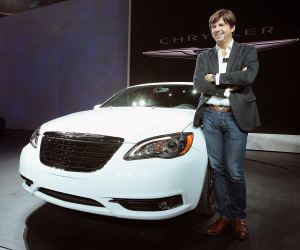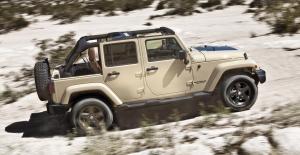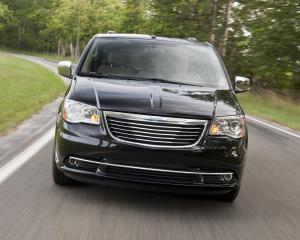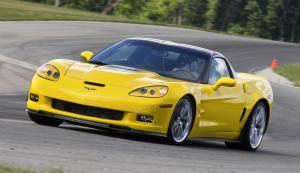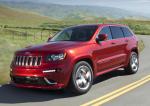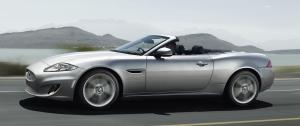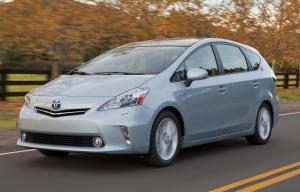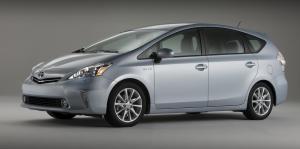By Roger Witherspoon
A car doesn’t have to be dull and plodding to be green.
One wouldn’t know that from the proficient, but uninspiring plug-in hybrids and electric vehicles that crawled off the drawing boards of the major auto companies. But that seems about to change.
“We call ourselves the ultimate driving machine,” said Matt Russell of BMW North America. “Preserving that driving experience is everything to us. We sell to those who really love driving, and we needed a way to build a sports car that was also energy efficient.
“We needed a sports car that can go from 0-60 miles per hour in 3.6 seconds, top out at 155 miles an hour and has a fuel efficiency rating of 72 miles per gallon. And that’s the BMW i8.”
The i8, unveiled at the New York International Auto Show, is a stealth fighter of a car built to flow through the air rather than punch through it. There are grooves in the body designed to channel onrushing air through a narrow opening in the rear, not unlike the combustion chamber of the average jet. The result, at high speed, is you ride on a cushion of air and hear nothing from the world outside.
Not to be outdone Porsche has taken its Cayenne, the 150-miles per hour SUV, and retooled a plug-in hybrid version as a family-friendly companion to its hybrid Panamera sports car.
“It’s our feeling that electric motors are the wave of the future,” said Porsche spokesman Thomas Hagg. “But the technology isn’t quite there yet and the infrastructure and market aren’t ready for completely electric vehicles. But we feel it is certainly coming, so we have begun moving in that direction with the plug-in hybrid. The Panamera proved that we can have an electric hybrid that meets the quality demands of Porsche in terms of performance and handling.
“But to really move our brand into the electric future we needed to develop a plug-in hybrid for the Cayenne, which is our best-selling model.”
The combined Porsche power plant was on display at the New York exhibit, which lasts till April 12, but is definitely not just for show. The Cayenne has a 95 horsepower electric motor combined with a 333 horsepower, three-liter V6 engine. One can drive the Cayenne about 20 miles on purely electric power – which is ample for many commutes – and the combined power plant gets about 50 miles per gallon.
While BMW and Porsche may have had the plug-in hybrid showstoppers, they were certainly not alone among auto makers who see an increasingly electric future. Ford’s popular Fusion has a plug-in electric model and Mitsubishi, which introduced a newly designed Outlander SUV, is also bringing out a part-electric hybrid version.
The company tentatively entered the all-electric market with its iMiEV, an awkwardly named vehicle that most resembled an ostrich egg on wheels. It was comfortable and efficient. But cars are a form of sculpture defined by how they make a person stop, look, and feel when standing close and then sitting inside. For many families, it is the largest form of kinetic art they will buy. As art works, the iMiEV or BMW’s i3 would never draw a crowd.
Hence the change. “The Outlander plug-in hybrid,” said Mitsubishi Executive Vice President Don Swearingen, “is a bigger vehicle and clearly one that will appeal to more consumers than the fully electric ones with their more limited range.
“We actually developed it a few years ago and started selling it in Japan and then in Europe. The demand was so high that the plant that makes our batteries is at full capacity. We still are offering all electric cars, but our growth opportunity is in the plug-in space. I drive a fully electric car, but I live 40 miles from work. As long as I can charge each night and again at the office it works fine. But if I want to make a longer trip, a decision has to be made as to what car to use.
“With the plug-in hybrid, all those considerations go away. We felt it important to offer a plug-in, five-passenger vehicle, which has 4-wheel drive capabilities and is a great opportunity for families. Since we were redesigning the Outlander, it made sense to design a version for the electric motor and batteries.”
While the regular Outlander is a seven passenger SUV, the hybrid version will seat five people, and the added space will be taken up by the battery pack. The Outlander will have two 60-horsepower electric motors – one assigned to each axle – as well as a 121-horsepower, 4-cylinder gasoline engine. The combination delivers about 44 miles per gallon.
Electric cars dominated American roadways for the first 20 years of the 20th Century, but quickly lost out to gasoline-powered vehicles which could go a lot further without worrying about a dead battery.
“Electric cars were initially the best sellers,” said Bob Casey, curator of transportation at the Henry Ford Museum in Michigan. “The assumption was that if there is going to be any widespread use of horseless carriages, electricity has a lot of advantages. You could start it easily and you didn’t need to shift any gears because of the torque characteristics of electric motors.
“In the 1890s people were making electric cars and steam-powered cars and then there was a newcomer in the lot – a smoky, noisy, dirty, internal combustion engine. In those early days, it wasn’t clear what these things were good for. If you lived in a city, public transportation was very good and the cities were very walkable.
“If you had a car, you used it to drive into the country at what was then considered the astonishing speeds of 15 miles per hour. But you couldn’t go far into the country because the roads were bad and there was no electricity and no place to recharge. The gas cars were much better suited to that use. By 1909 the electric car and steam car were both sold at the margins, and the market was dominated by cars powered by the internal combustion engine.”
The second coming of electric cars hasn’t changed that equation much.
“Right now,” said Orth Hedrick, Kia’s vice president for product planning, “electric vehicles are just three to five percent of the market, and the driving range is the biggest factor holding them back.
“Most people are used to a gas tank with 250 to 300 miles of driving range. But you can’t use an EV to go take a trip to see Grandma. A lot of people view driving EVs like leaving the driveway with the gas empty light on and wondering how far they can go before the car stops.”
The technical fix to that anxiety was the plug-in hybrid.
When Chevrolet came out with its 2011 Volt plug-in hybrid it stressed the fact that the compact could get more than 300 miles to a tank of gas. Having the electric motors directly on the axle provided instant torque, enabling the small car to take off like a turbocharged roadster. The Volt definitively proved the concept of the plug-in hybrid, even if its looks didn’t wow the consumers.
Which is why Kia is banking on an all-electric version of its youth-oriented Soul, a car marketed with hip-hop hamsters to lure a younger generation to its environmentally friendly wheels. Basketball star Lebron James may lure buyers into Kia showrooms to see their high-performing sports car, the K-900. But once they are in the showroom, Kia is banking on the Now Generation driving off in an urban-oriented Soul.
“We designed the electric and the gas versions at the same time, rather than take an existing car and modify it so you lose space to the batteries,” explained Hedrick. “The Soul will get 93 miles before you need to recharge, which is the best range in the electric car market except for the $80,000 Tesla, which costs three times as much.
“The Soul is our best-selling vehicle. It has a cool, funky design that is perfect for the urban buyer and it will be the cornerstone of our clean mobility program.”
And Kia’s hamsters will bounce merrily to the quieter beat.







